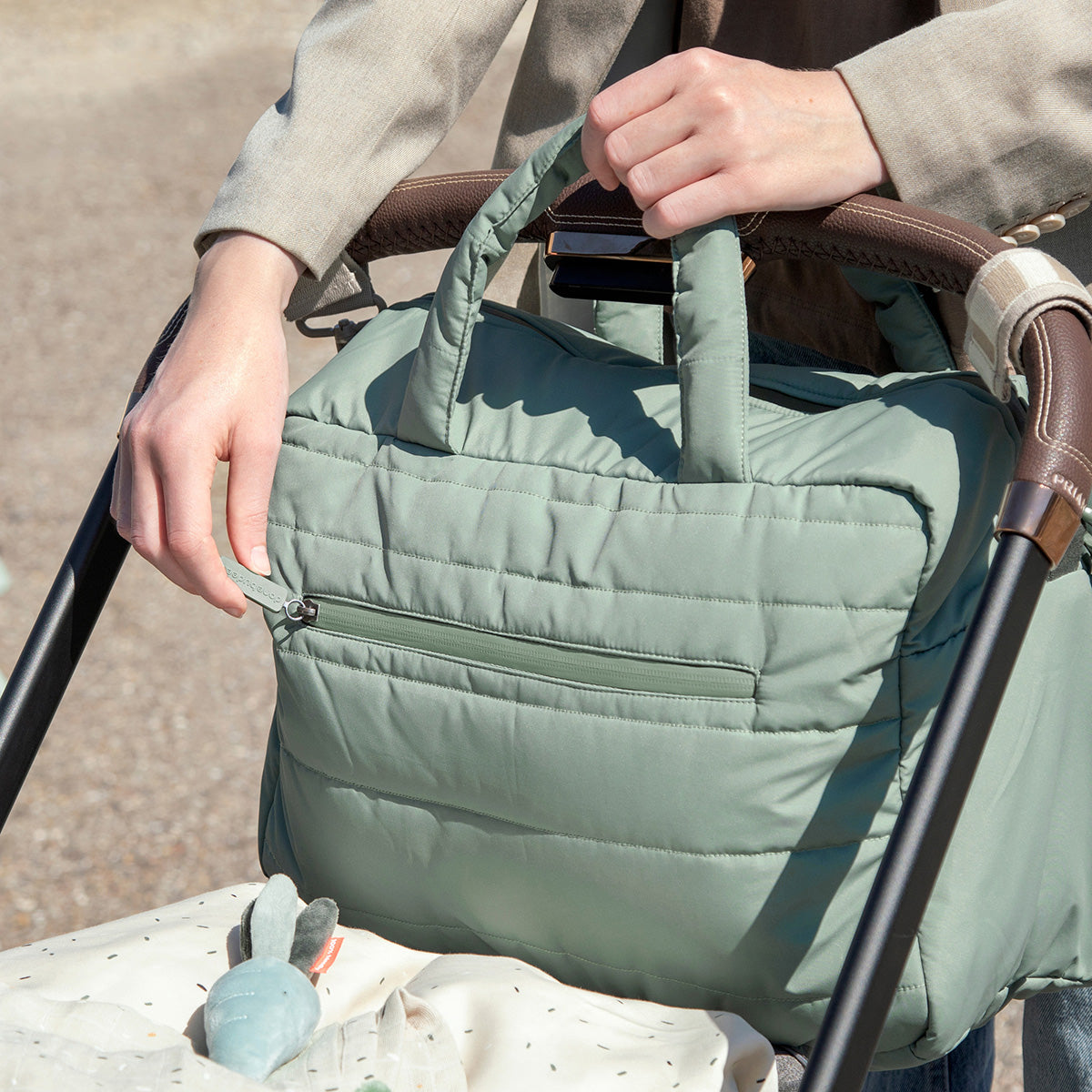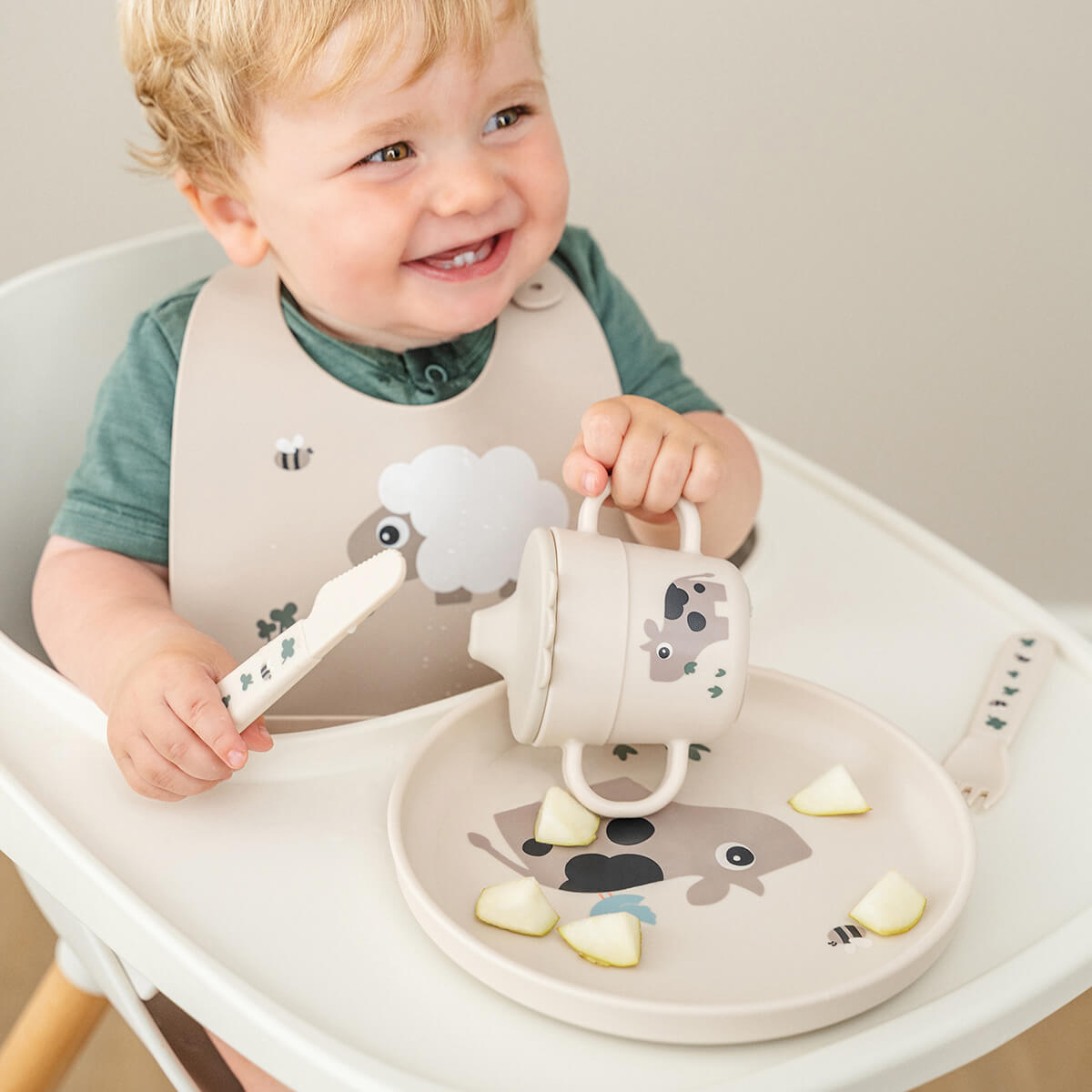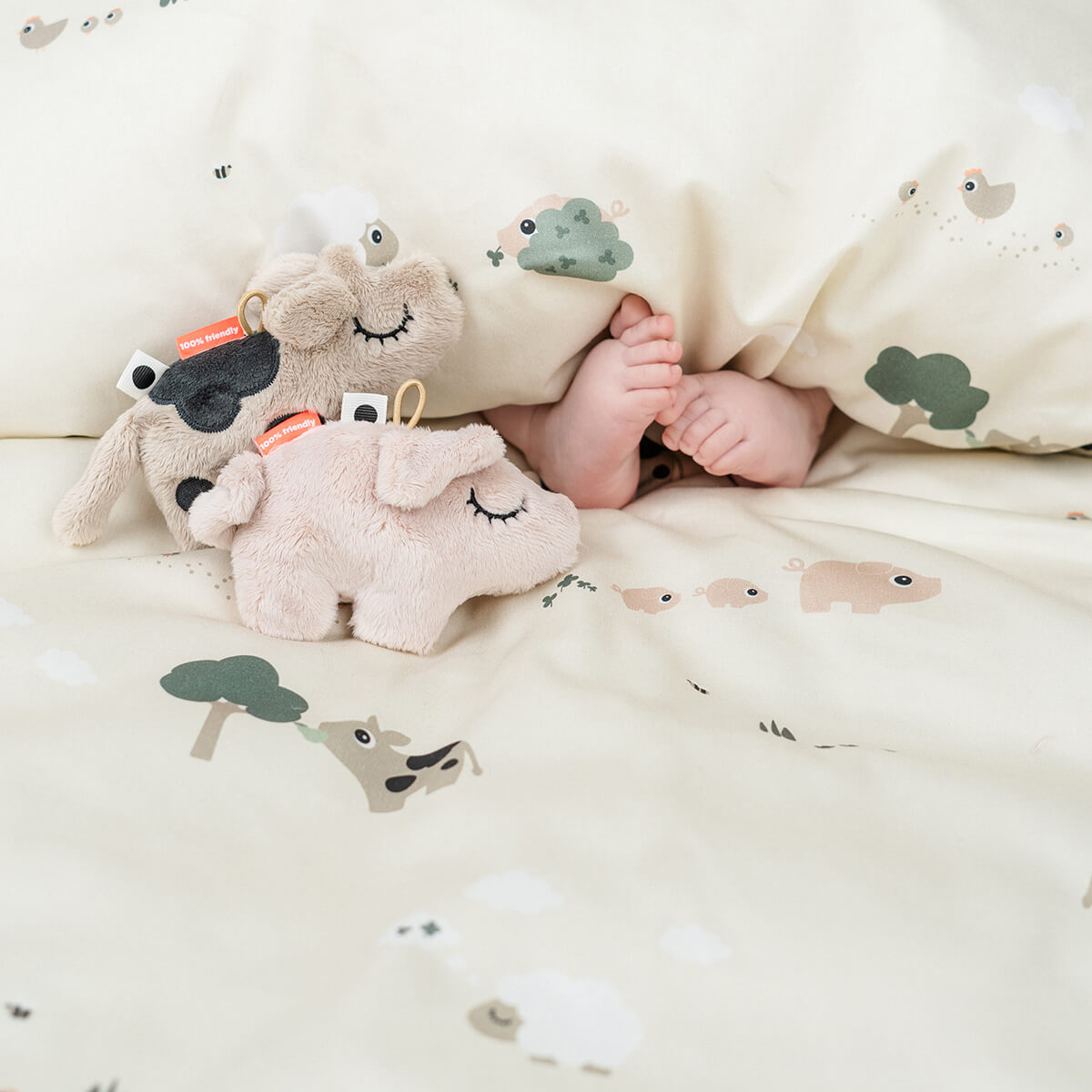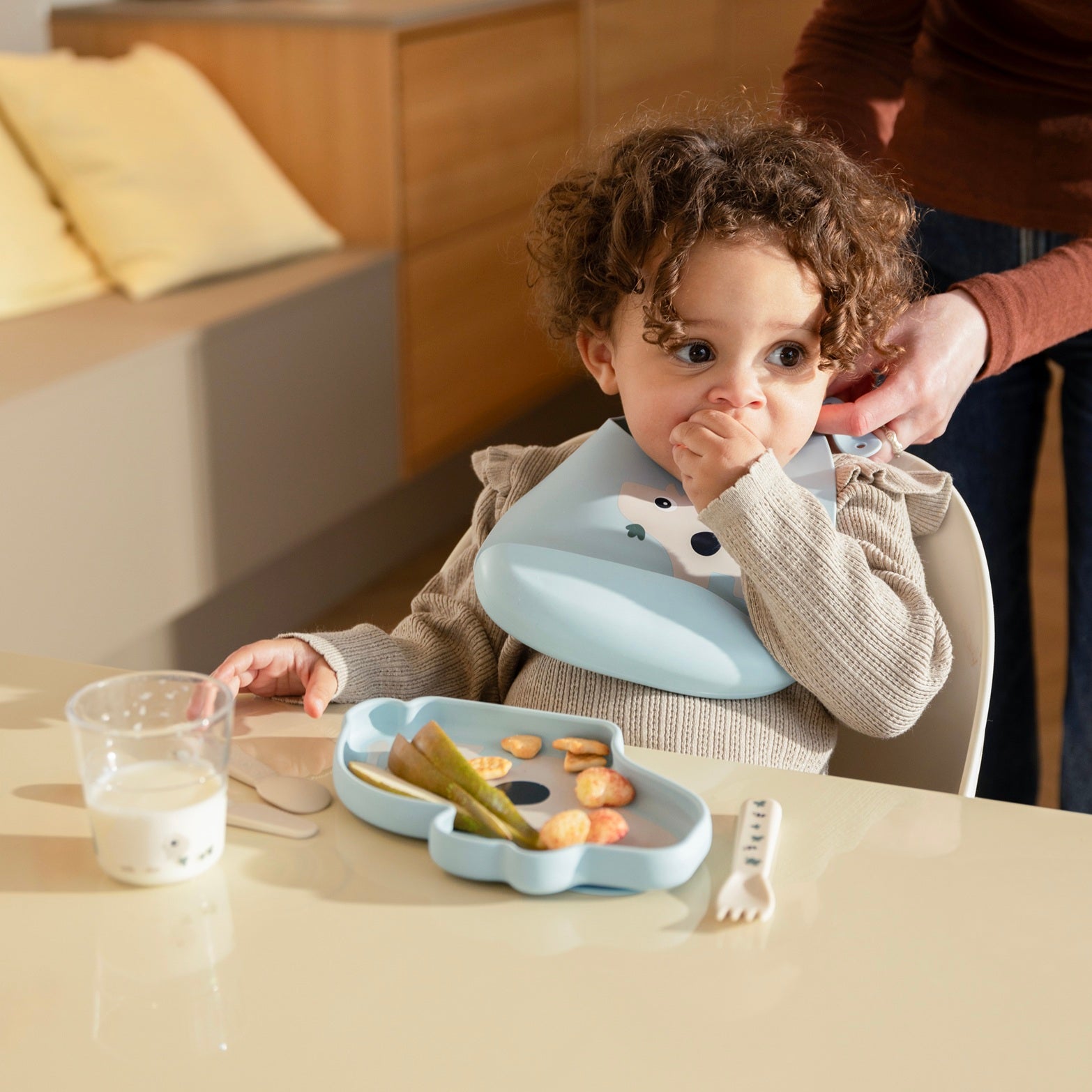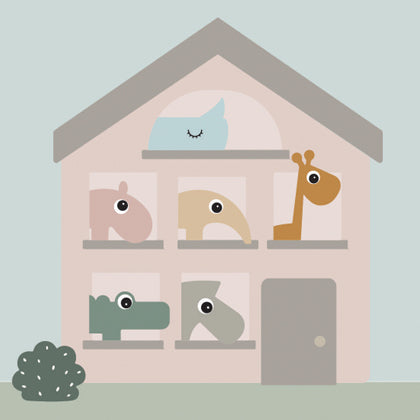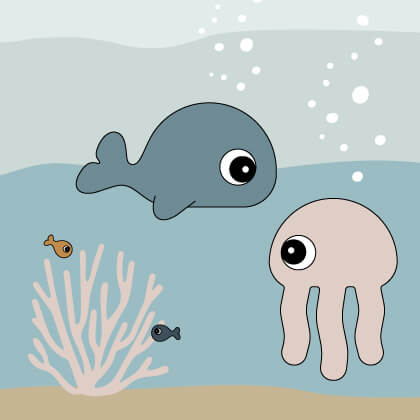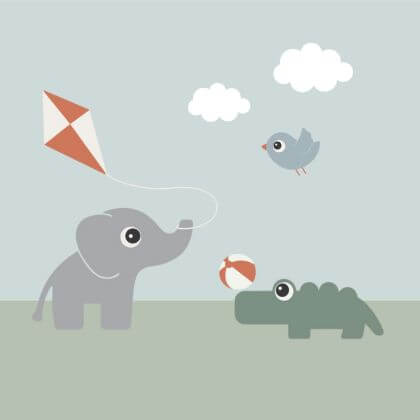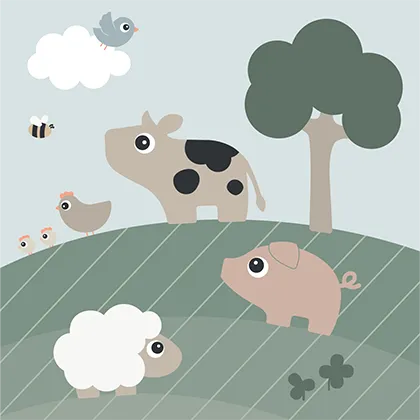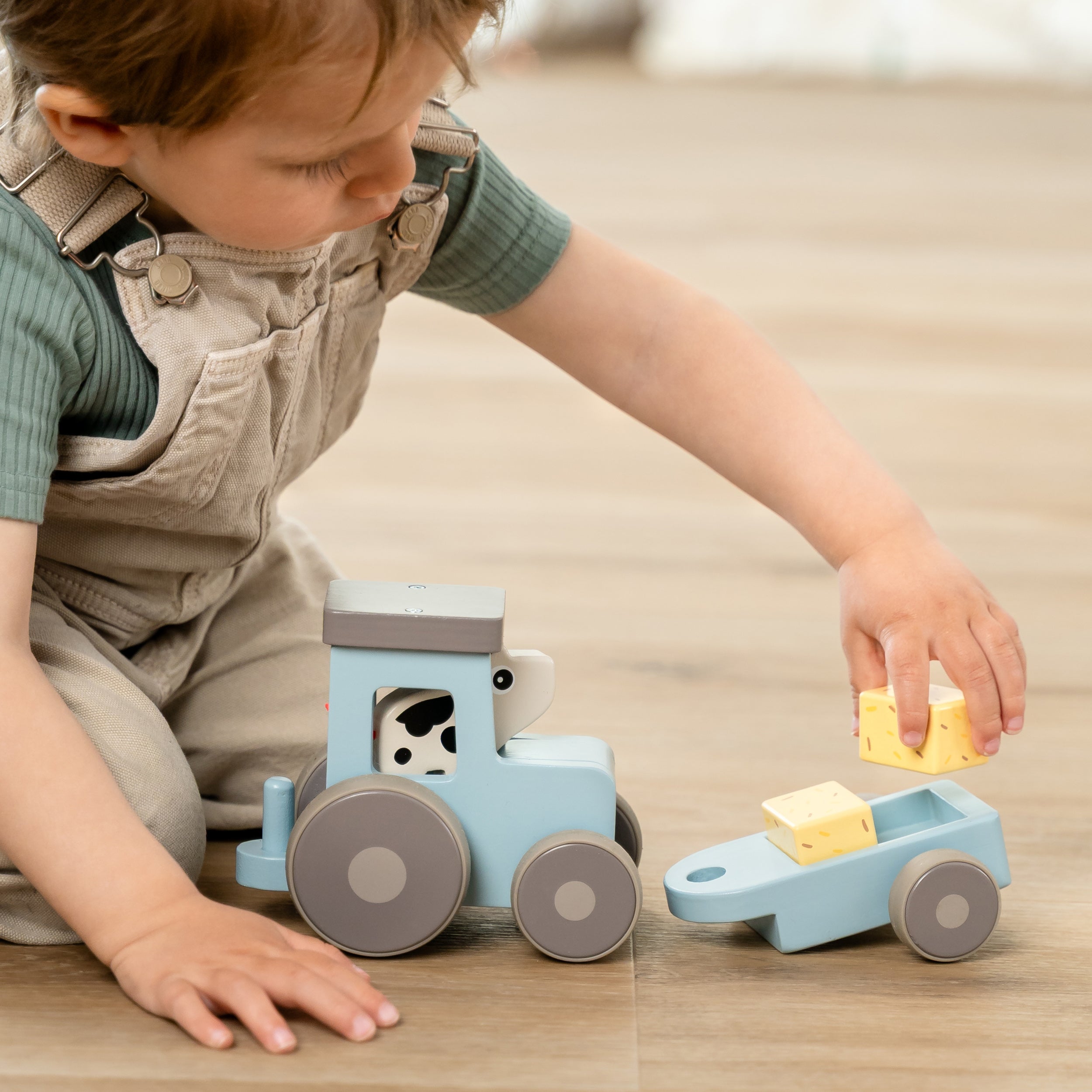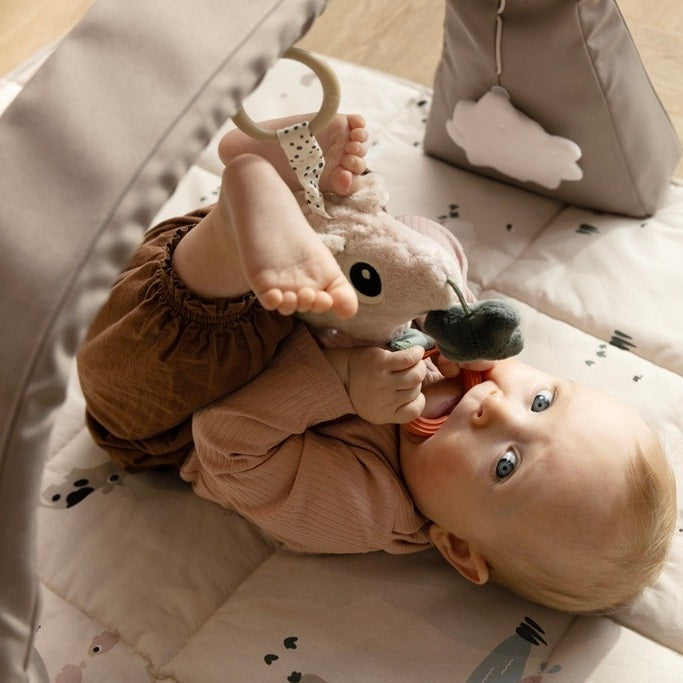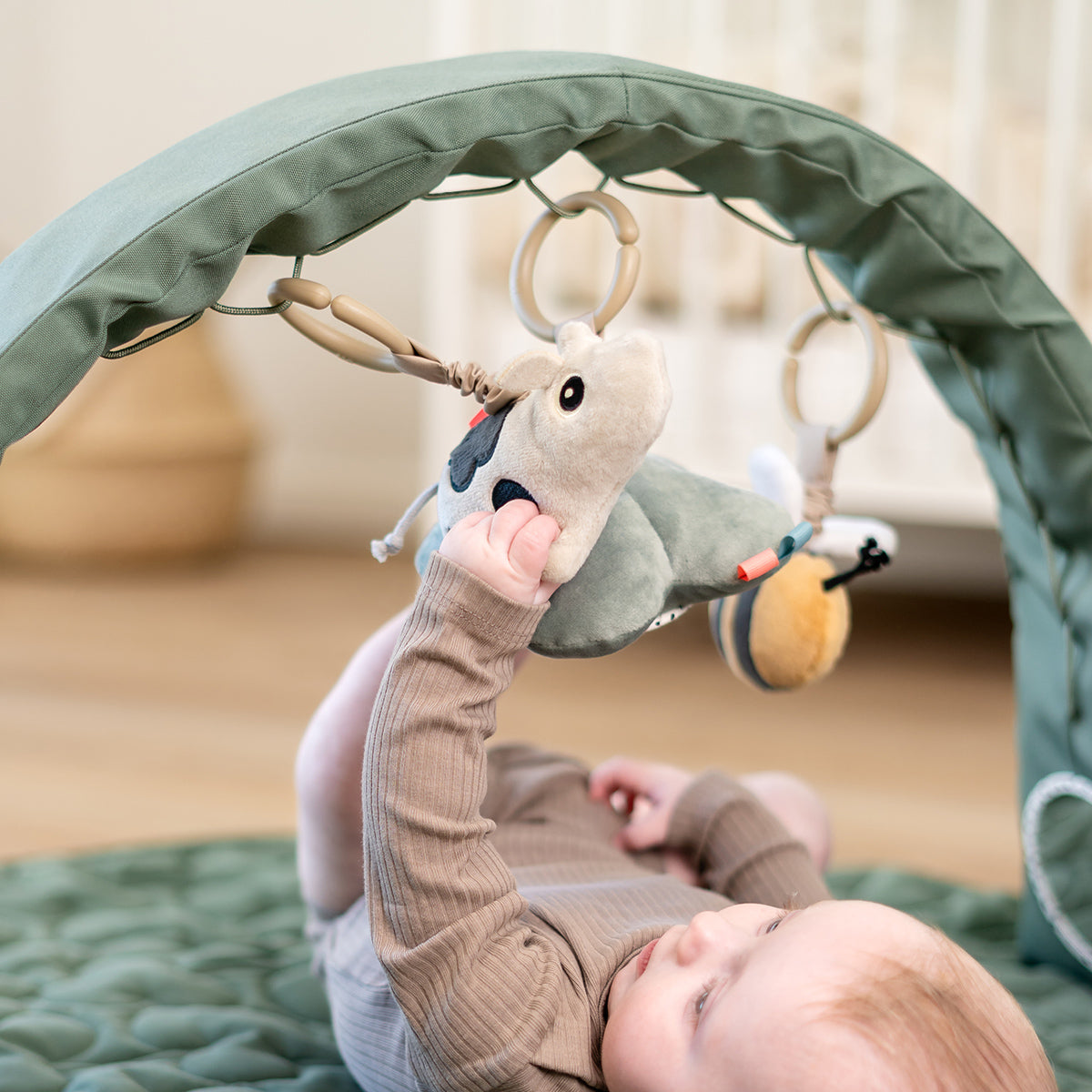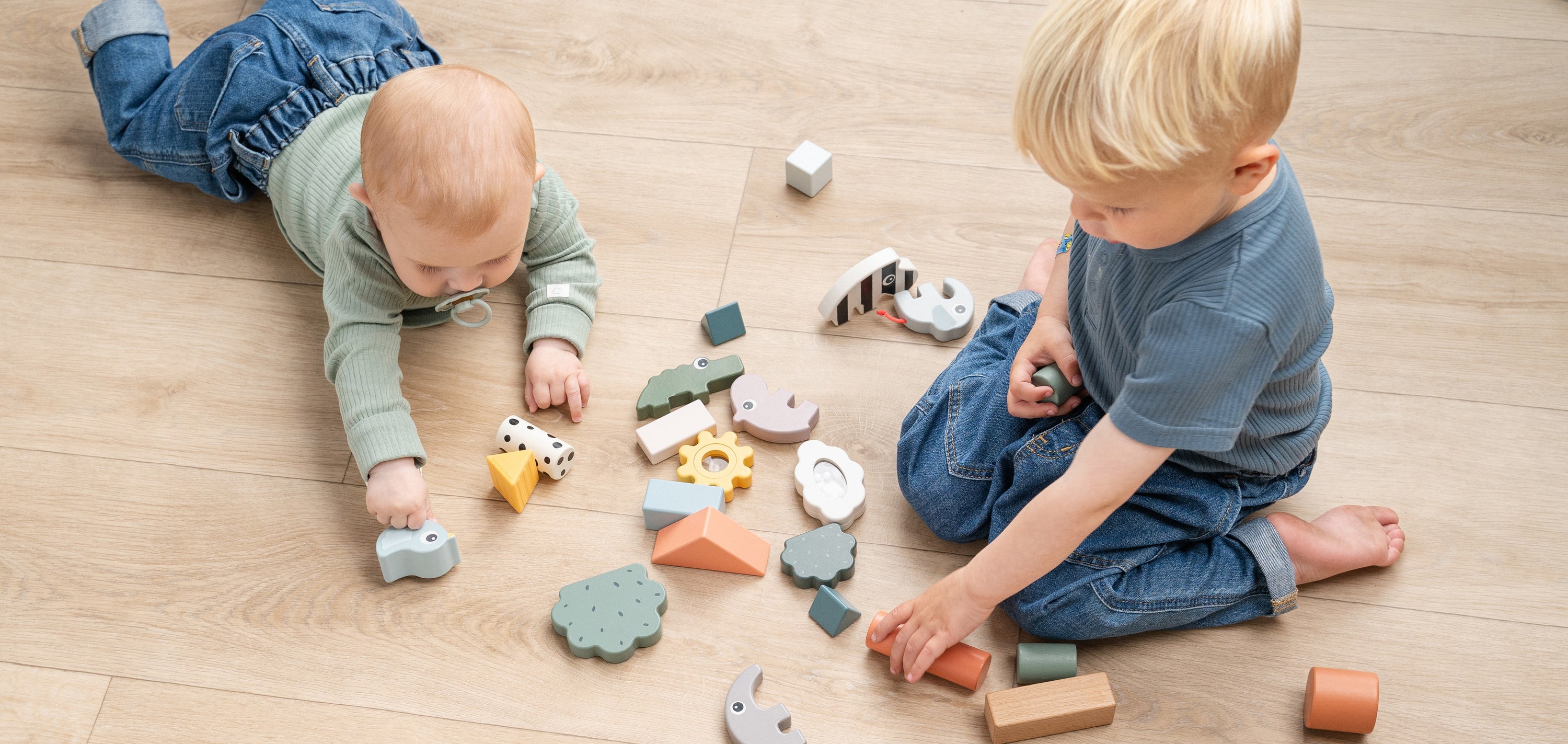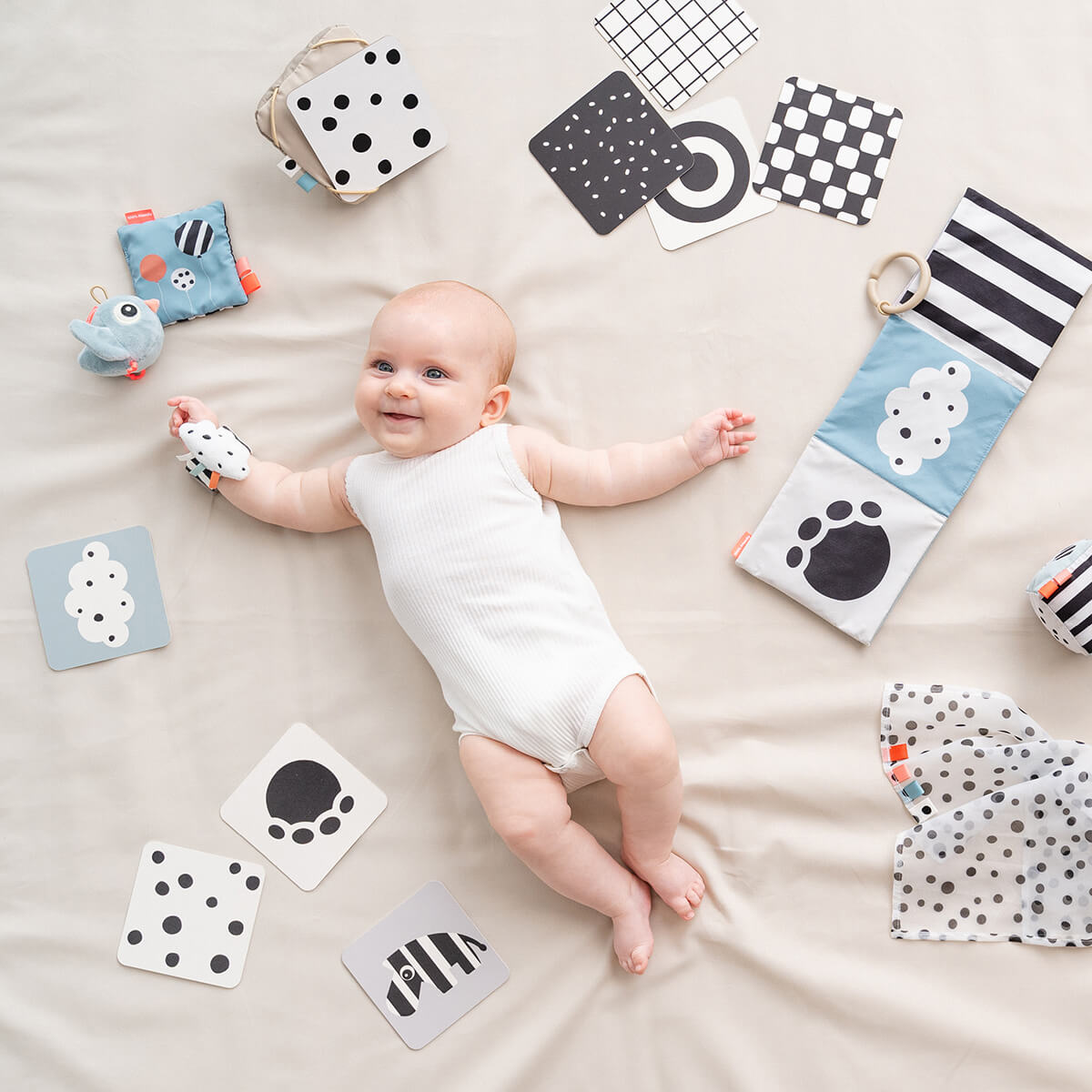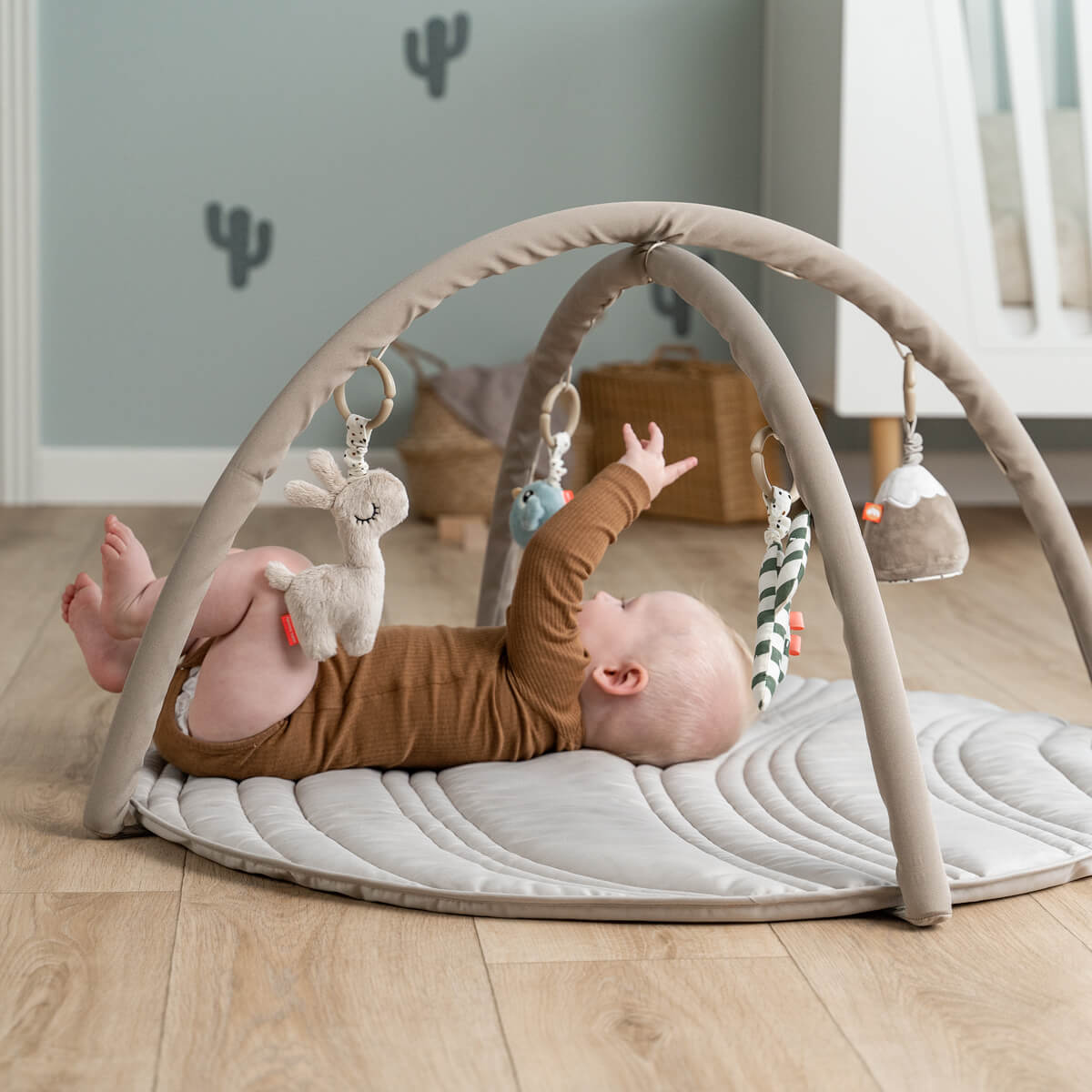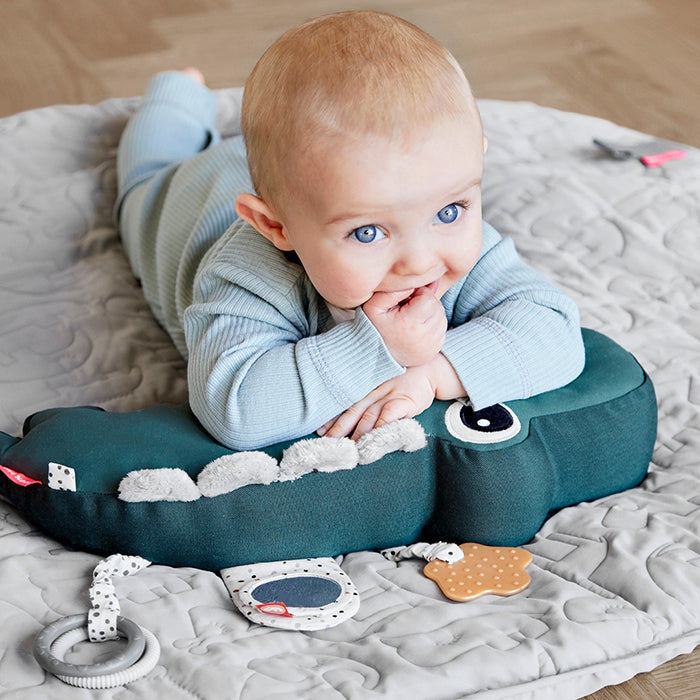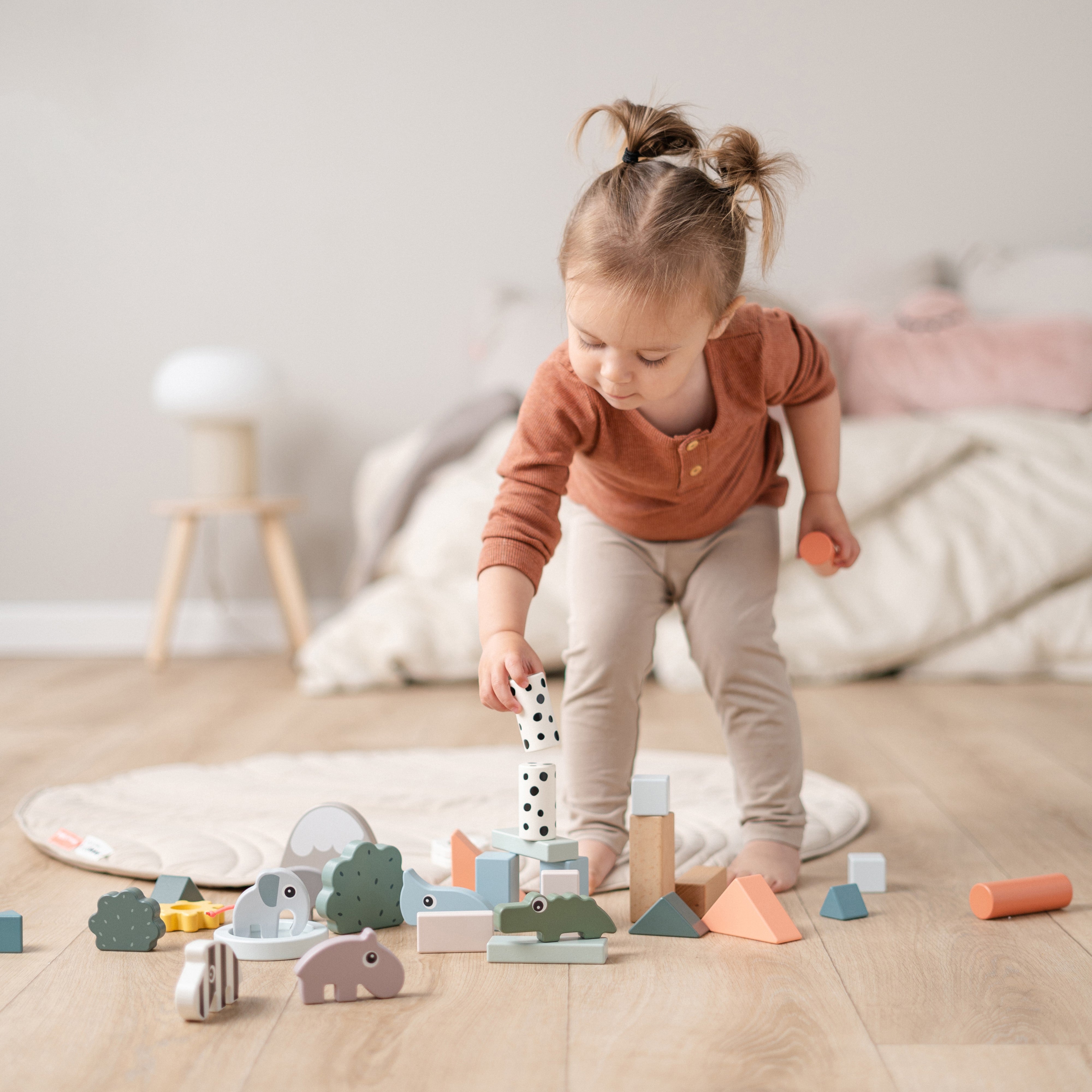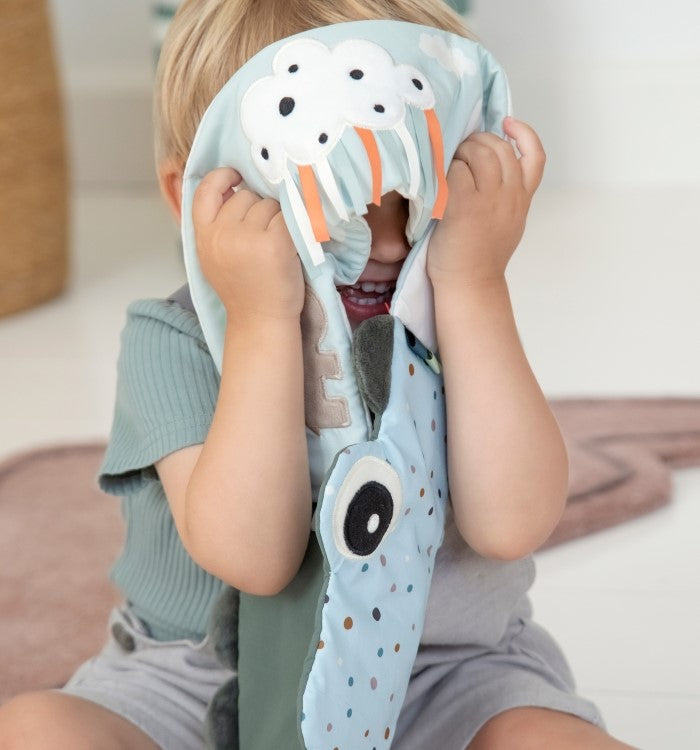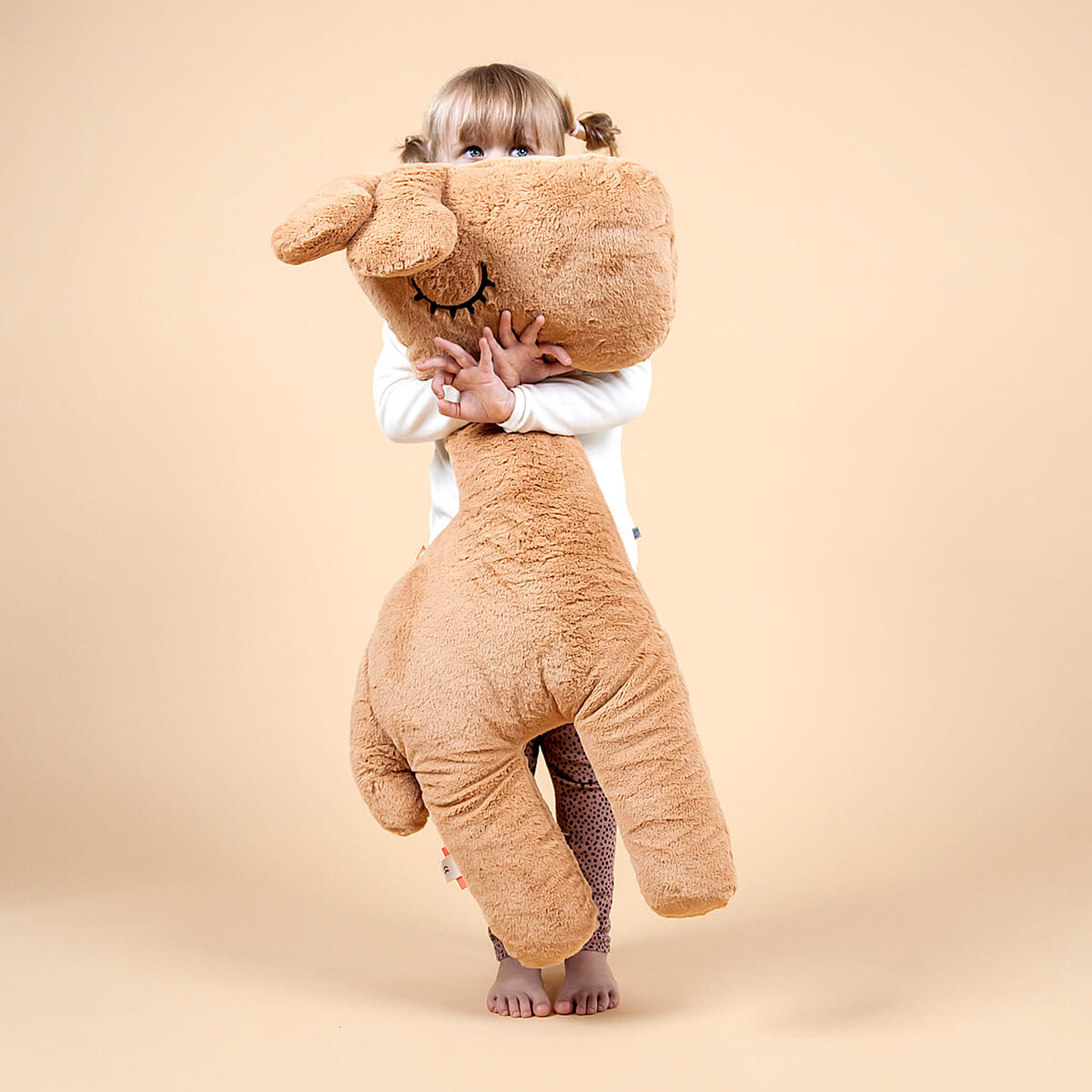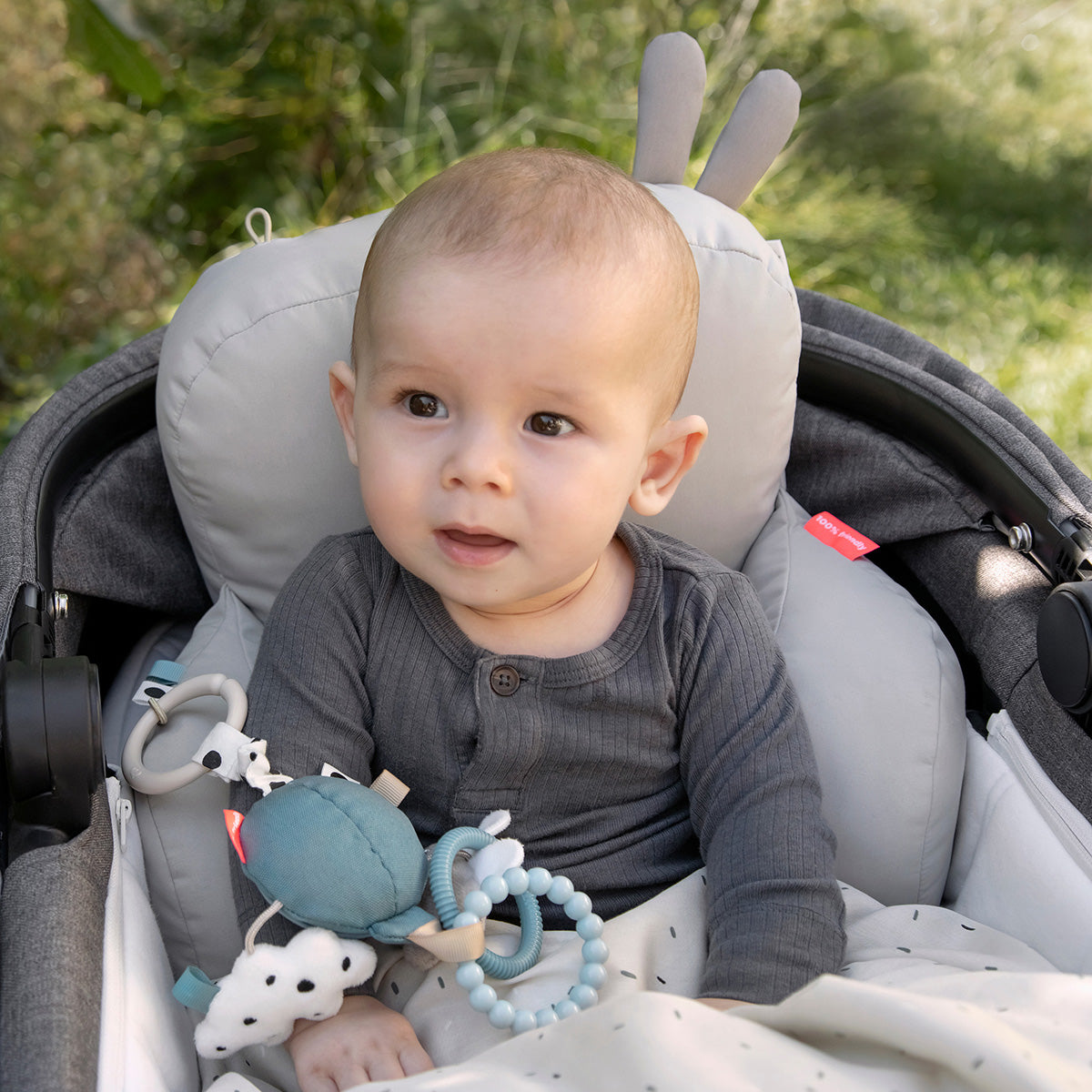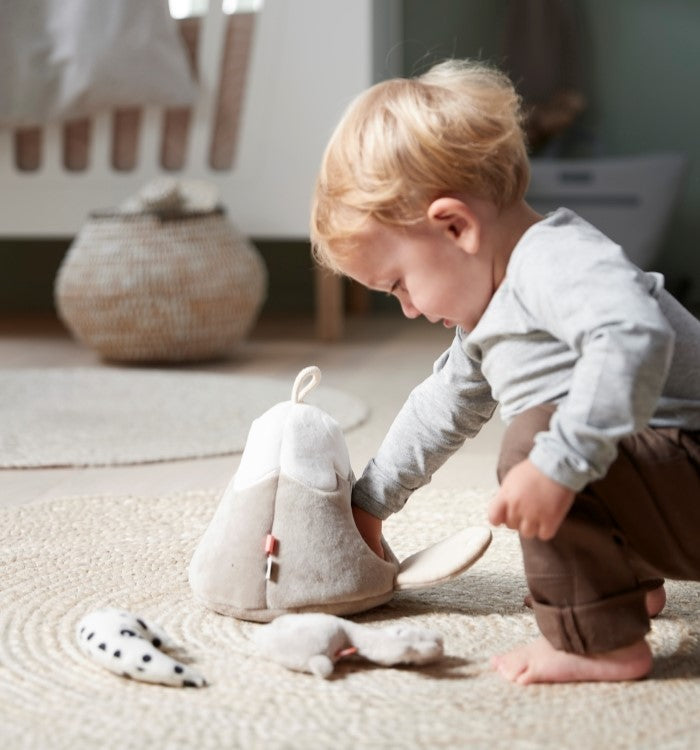Det kan føles som en udfordring at finde det rigtige legetøj til dine børn, især fordi deres behov og evner ændrer sig med hvert udviklingstrin.
Denne guide gennemgår de vigtigste ting til legetid i hver fase og hjælper dig med at vælge legetøj, der vil engagere, trøste og pleje din baby fra fødsel til småbørnsalderen.
Naviger til
0-3 måneder
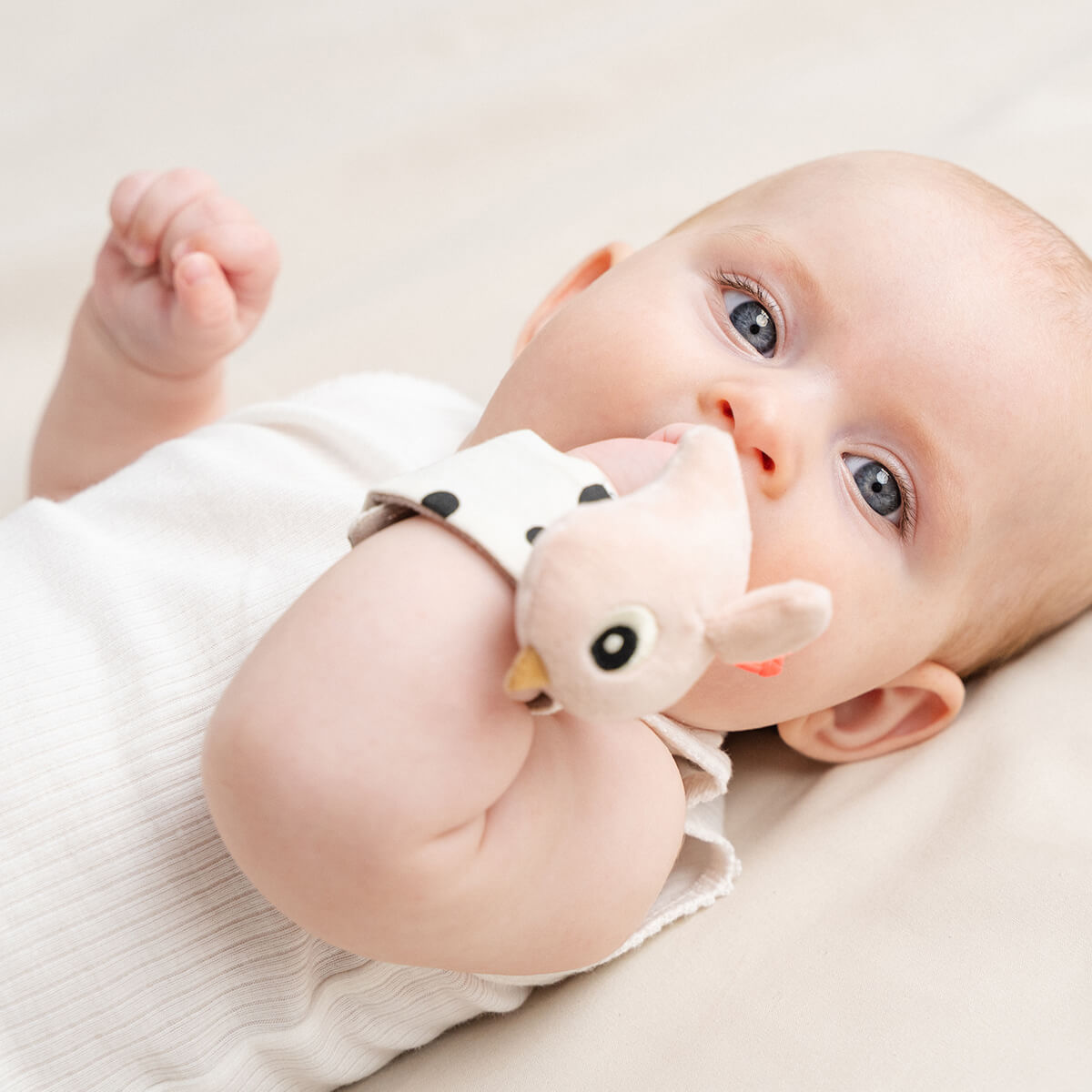
0-3 måneder
I de første 0-3 måneder udforsker dit barn sin nye verden, og det rigtige legetøj kan gøre denne rejse mere engagerende og gavnlig.
Legetøj med høj kontrast med dristige mønstre er særligt fængslende for nyfødte og hjælper med at stimulere deres visuelle udvikling og fastholde deres opmærksomhed.
Introducerer blide lyde og beroligende rytmer gennem musikalsk legetøj og uroer kan
både berolige og engagere din baby. Disse lydoplevelser hjælper også med at genkende forskellige toner og mønstre, hvilket bidrager til deres generelle sensoriske udvikling.
Når din baby begynder at gribe og ryste, rangler et godt redskab til at forbedre finmotorikken. Denne enkle interaktion hjælper dem med at forstå årsag og virkning, samtidig med at hånd-øje-koordinationen forbedres.
Aktivitetscentre og aktivitetsbuer skaber et stimulerende miljø, hvor barnets
kan strække sig, sparke og række ud. Denne interaktive leg understøtter fysisk vækst og koordination og gør det lettere at udforske og udvikle sine muskler.
Til de øjeblikke, hvor din baby har brug for hvile, cozy loungers. og behagelige tæpper giver vigtig varme og sikkerhed, så de kan føle sig trygge og afslappede.
3-6 måneder
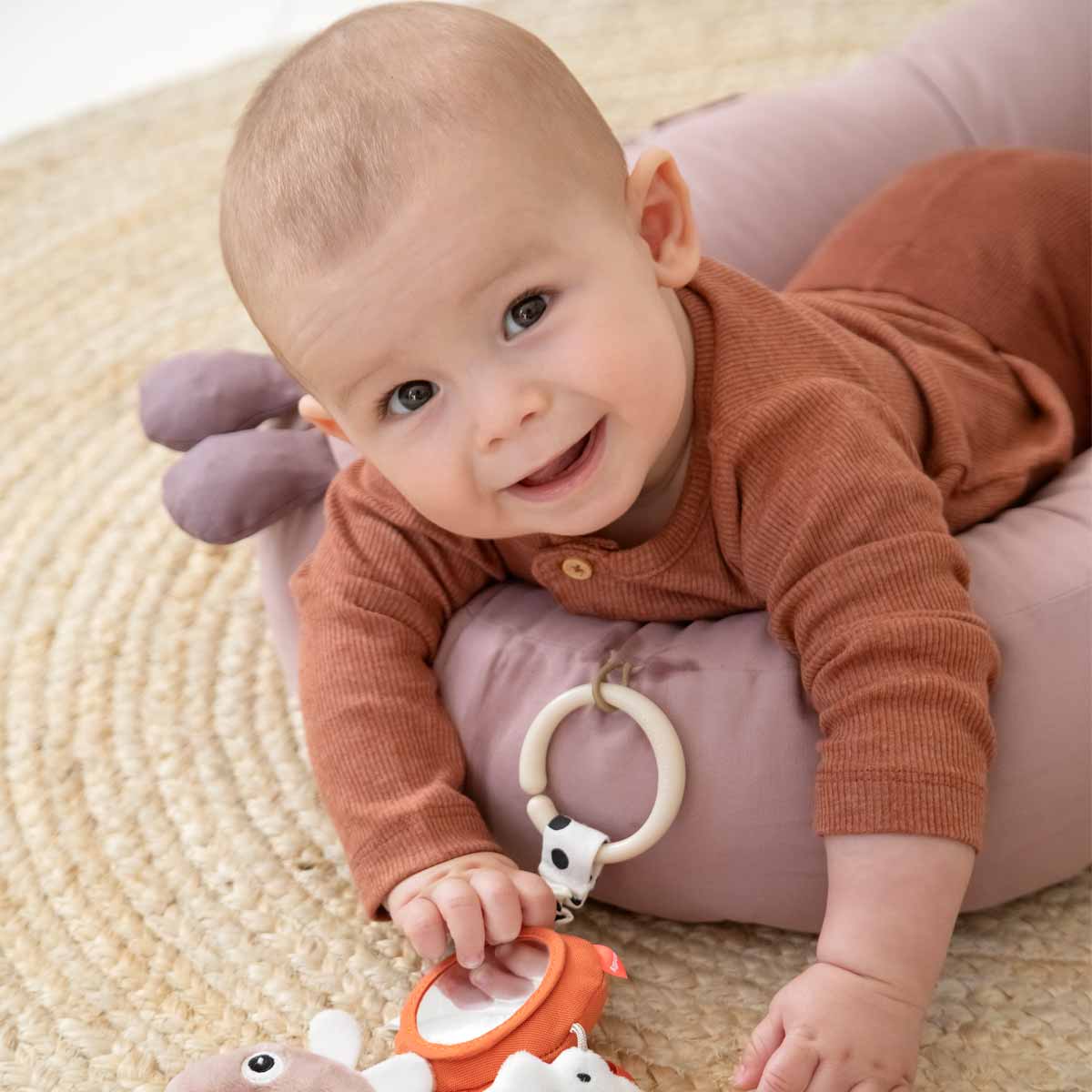
3-6 måneder
Når din baby er mellem 3 og 6 måneder gammel, vokser den hurtigt og udforsker verden omkring sig. Legetid bliver en vigtig del af deres udvikling, og at vælge det rigtige legetøj kan gøre hele forskellen.
Tid på mavener f.eks. afgørende for at opbygge nakke-, skulder- og kernestyrke og hjælper dit barn med at forberede sig på milepæle som at sidde og kravle. For at gøre mavetiden mere engagerende kan du placere sensorisk aktivitetslegetøj inden for rækkevidde.
Aktivitetsbøger med krøllede sider eller spejle opmuntrer dit barn til at løfte hovedet, række ud og udforske, mens spiraler med forskellige teksturer kan stimulere dets nysgerrighed og motoriske færdigheder.
Blødt krammedyr, som vores Deer Friendsspiller også en vigtig rolle i denne fase. De giver ikke kun trøst og tryghed, men hjælper også med den følelsesmæssige udvikling. Din baby kan begynde at knytte sig til dette legetøj og øve sig i tidlige sociale færdigheder som at kramme eller kæle.
6-9 måneder
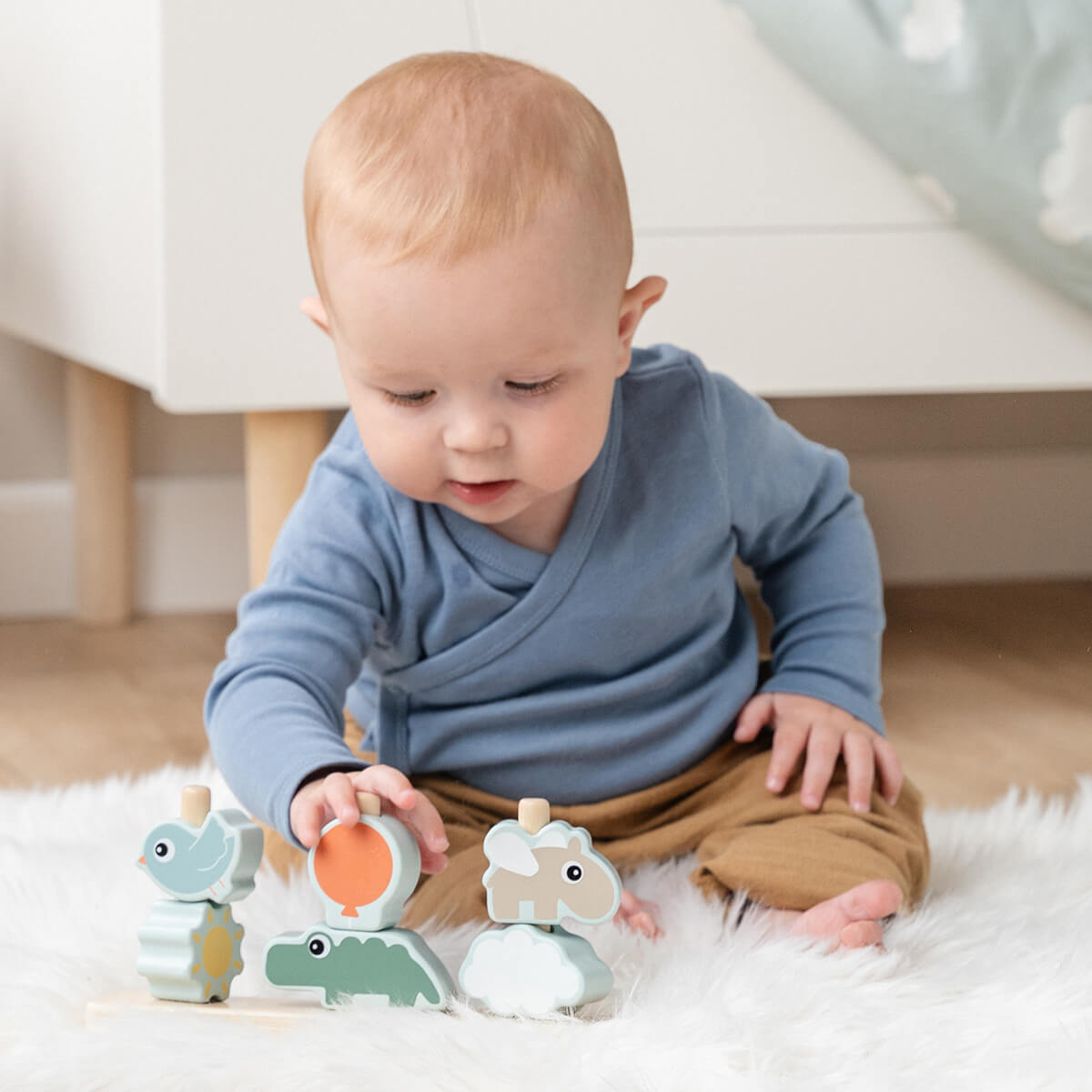
6-12 måneder
Mellem 6 og 12 måneder bliver dit barn mere og mere nysgerrigt og aktivt, hvilket gør legetiden til en spændende mulighed for læring og udvikling.
Lærende legetøj som stabelterninger er fantastisk til at hjælpe din baby med at udvikle hånd-øje-koordination og problemløsningsevner. At stable, vælte og udforske forskellige former kan holde dem beskæftiget, mens de styrker deres motoriske færdigheder.
Badetiden bliver også til en legende og lærerig oplevelse med de rigtige badelegetøj. Skrigende ænder, kopper til at hælde vand i og flydende legetøj gør det både sjovt og lærerigt at plaske rundt. Leg med badelegetøj er med til at forbedre barnets greb, koordination og endda sproglige færdigheder, når I taler og leger sammen.
Og så selvfølgelig, krammevenner fortsat være vigtige ledsagere i denne periode. De giver trøst og hjælper din baby med at øve sig i omsorgsfuld adfærd, hvilket bidrager til den følelsesmæssige udvikling.
12+ måneder
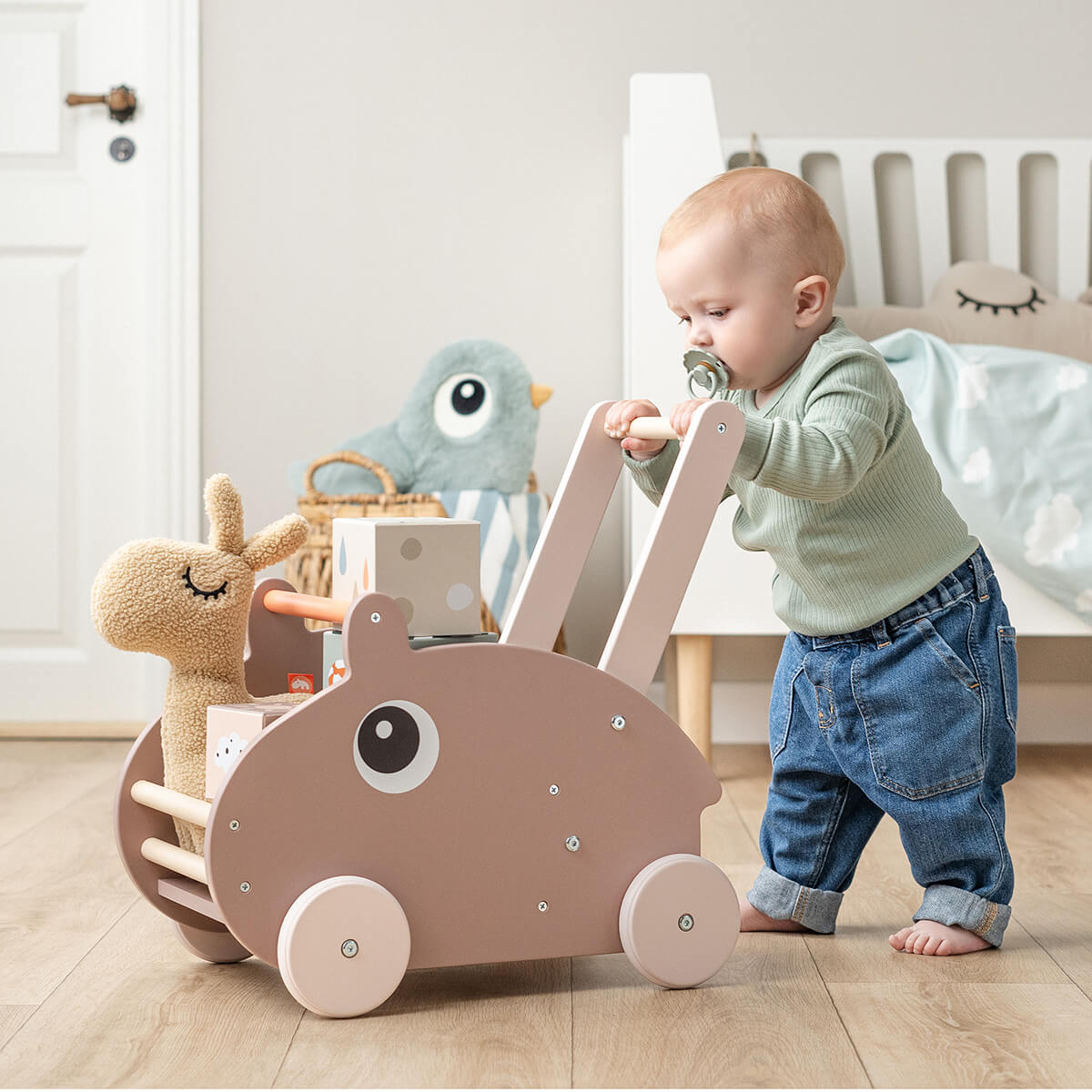
12+ måneder
Fra 12 måneder og opefter bliver dit barn mere mobilt og eventyrlystent, og legen bliver endnu mere dynamisk. Det rigtige legetøj kan fortsætte med at støtte deres voksende uafhængighed og nysgerrighed og samtidig fremme vigtige færdigheder.
Legetøj af træ er tidløst og perfekt til at udvikle dit barns kreativitet og finmotorik. Klodser og træ puslespil hjælper med problemløsning og hånd-øje-koordination, når dit barn eksperimenterer med forskellige former og mønstre.
Når dit barn begynder at gå, legetøj, der kan trækkes med og vandrere giver både underholdning og støtte til deres nyfundne mobilitet. At trække i et stykke legetøj eller skubbe en rollator fremmer balance og koordination og gør det sjovere at gå, samtidig med at man opbygger selvtillid.
Udendørs leg får også et nyt niveau af spænding. Legesæt med sand introducerer dit barn til taktile oplevelser og fantasifuld leg. At grave, hælde og forme sand kan sætte gang i kreativiteten og forbedre fingerfærdigheden.
Og så selvfølgelig, store krammevenner fortsat være trøstende ledsagere. Disse større bamser giver tryghed i stille stunder og er perfekte til at øve sig i plejende adfærd som kram og leg.
